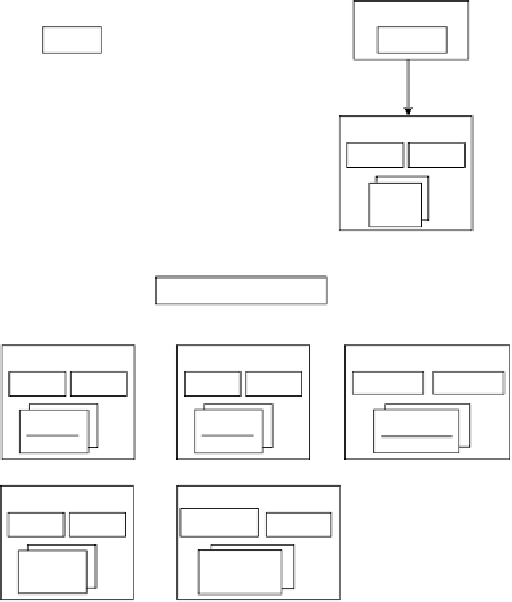Information Technology Reference
In-Depth Information
Federate1
LRC
Federate2
LRC
LRC : Local RTI
Component
Invoke services or
get callbacks
Invoke services or
get callbacks
LS1
LS2
LFS
LIS
LFS
LIS
LRIs
Interactions
or attribute updates
LRIs
RTI index service
FMS
FMFS
DMS
OOMS
OOMFS
FMIS
DMFS
DMIS
OOMIS
FMRIs
DMRIs
OOMRIs
TMS
DDMS
DDMIS
TMFS
TMIS
DDMFS
TMRIs
DDMRIs
LS: Local Service
FMS: Federation
Management Service
TMS: Time
Management Service
DMS: Declaration
Management Service
DDMS: Data
Distribution
Management Service
(X)RIs: (X) Resource
Instances
OOMS: Object and
Ownership
Management Service
(X)FS: (X) Factory
Service
(X)IS: (X) Instance
Service
FIGURE 18.1
Framework overview.
The LS is used as a messaging broker of federates and consists of the
factory service LFS, the instance service LIS, and multiple resource
instances LRIs, with one LRI for each federate. A federate communicates
with the outside world through its LRI by invoking services and getting
callbacks. As shown in
Figure 18.2
, the LRI is structured into six modules.
Each of the modules except the callback module corresponds to one of the
management services. The callback module is used to buffer callbacks for
a federate.
The objective of separating the HLA service groups into different grid
services and using a modular structure for the LRI is to create a plug-and-
play paradigm for an HLA RTI implementation so as to build an extensible




Search WWH ::

Custom Search